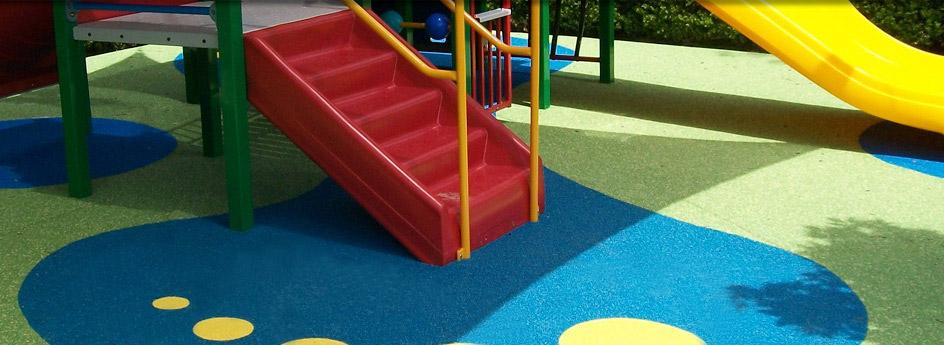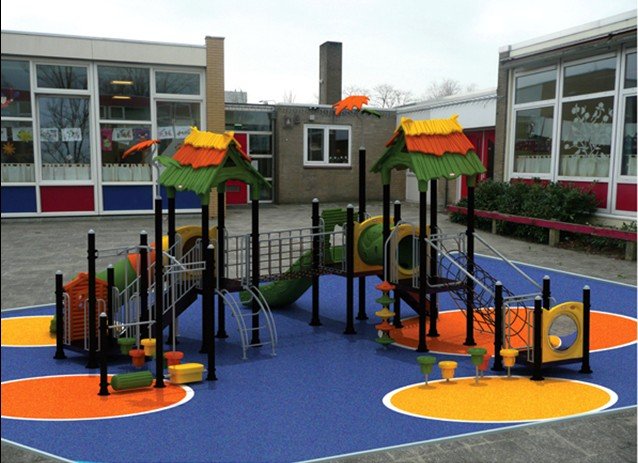Business
Choosing Safe Playground Surfacing

Play lands and parks at times look like areas especially designed for injuries. According to a study, 70% of injuries in playgrounds had been due to falling on surfaces. A lengthy research was conducted on playground injuries suffered by children and grave measures were taken to prevent them. This triggered different organizations to set specific playground standards such as the Australian standards for playgrounds. The AS/NZS 4422: 1996 standard has a very lucid criterion for selecting safe playground surfaces (by carefully testing the potential safety of a certain playground surface). On the other hand, other regulatory measures could ask for conformity to wheelchair accessibility, ensuring that the surface is safe for handicapped children. Only the surfaces conforming to these standards are officially recommended to be installed.

Playground Flooring
Playground flooring is typically layered on surfaces that lie beneath the swings and generally covering the ‘fall-prone zone’ in play areas and parks. These ‘surface layers’ include playground rubber (including mats, tiles, mulches), wood, concrete, and asphalt. Amongst the list, playground rubber has proven to be the safest.
Types of Playground Surfaces
Playground surfaces can essentially be divided into two main groups: loose fill and unitary fill. Loose fill surfaces are placed according to calculated heights in order to have the proper cushioning effect. These include rubber mulches, hardwood chips, sand and shredded rubber. Loose fills however require a high maintenance such as frequent sweeping, tucking in, and raking. On the contrary, unitary fill includes seamless surfaces that may have high installation costs but require low maintenance. These surfaces are not in danger of getting damaged or peeled off and thus are better than the loose fill ones in this respect. Unitary fills typically include pour-in-place surfaces and rubber tiles.
Mulches
Playground rubber surfaces are available in different forms in the market. The more popular ones are rubber mulches. Mulches are essentially a protective layer that is placed upon the ground. Rubber mulches are made from rubber wastes and tires. They are highly recommended for playground surfacing because they are long lasting, do not have a tendency to decompose and give the surface a ‘springiness’ or bounce that helps prevents injuries that a hard surface such as wood would not. The Association of International Play Equipment Manufacturers has officially declared this flooring as one of the best. It is compatible for children in wheelchairs and is highly recommended for the play area of handicapped children. Furthermore, it comes in many different arrays of colors that help make a playground colorful. There is a caution statement however; playground rubber has proven to be flammable in certain situations and can require high maintenance.
Tiles and Mats
Although this type of playground rubber may require trained persons for installation and a cost higher than loose fill, it is safer in many respects. Playground rubber tiles consist of virgin rubber (upper layer) and recycled rubber (base). They are more durable, less prone to damage, comfortable to walk on and generally require less maintenance than loose fills do (such as constant raking to even out for wheelchair accessibility). The disadvantage remains that the tiles can disintegrate; several high quality manufacturers have however, found a way around it and have better quality tiles currently.
It has already been decided that synthetic materials such as playground rubber are the safest material for playgrounds. The selection of the further types entirely depends on the purchaser: their budget, the surfacing border, and the total area of the ‘fall-zone’.
-

 Tech11 years ago
Tech11 years agoCreating An e-Commerce Website
-

 Tech11 years ago
Tech11 years agoDesign Template Guidelines For Mobile Apps
-

 Business6 years ago
Business6 years agoWhat Is AdsSupply? A Comprehensive Review
-

 Business10 years ago
Business10 years agoThe Key Types Of Brochure Printing Services
-

 Tech8 years ago
Tech8 years agoWhen To Send Your Bulk Messages?
-

 Tech5 years ago
Tech5 years ago5 Link Building Strategies You Can Apply For Local SEO
-

 Law5 years ago
Law5 years agoHow Can A Divorce Lawyer Help You Get Through Divorce?
-

 Home Improvement6 years ago
Home Improvement6 years agoHоw tо Kеер Antѕ Out оf Yоur Kitсhеn
































